5 Strategies for Making the Most of a Co-Employment Relationship
Posted on August 13th, 2019 Read time: 3 minutes

Co-employment opens doors for companies to expand the breadth and expertise of their workforce using long-term contractors. Yet many organizations avoid taking full advantage of this work system because they are unsure of how to mitigate co-employment risks.
What is the answer, then? Businesses that want to engage long-term contractors through co-employment have to anticipate and ward off issues from the onset. With pragmatic planning, employers and workers alike can benefit from this arrangement.
Businesses should follow these five highly effective strategies for making the most of a co-employment relationship:
1. Ensure recruitment processes are aligned for both parties.
Temporary staffing firms sometimes communicate the roles and responsibilities of a job to prospective employees in ways that raise more questions than provide answers. Not only can this frustrate a prospective worker, but it can also lead to unqualified candidates landing in co-employment positions after being poorly recruited. And it creates unsatisfactory outcomes for the worker and can negatively affect office culture.
To prevent co-employment issues with temporary employees, invite the staffing agency recruiters for a tour. Show them the work you do, and have them interview employees to get an understanding of daily duties. Then, when the agency begins seeking appropriate candidates to fill open jobs, agency recruiters will be able to accurately explain expectations.
2. Take contractor complaints seriously.
Unhappy workers file complaints. Sometimes, though, companies feel no obligation to address temporary worker concerns or conduct investigations into grievances. In the worst cases, a company might terminate someone for complaining. But when an organization does this, it gives the worker a potentially valid claim of retaliation.
To avoid this situation, companies should responsibly consider all complaints and follow protocols and agreed-upon responsibilities as co-employers. If a thorough investigation seems necessary, workers and their staffing agencies should come together to agree on which party is best suited to conduct it.
3. Address all aspects of compensation upfront.
Conversations about compensation shouldn’t be limited only to what contractors receive in their typical paycheck. Workers and their employers of record should always work together on an agreement outlining the comprehensive compensation structure and all of the details it involves. For instance, will the contractor qualify for overtime? Is his or her role exempt because of federal and state guidelines? Should he or she expect bonuses or commission?
By considering every possibility, co-employment partners can effectively stave off future miscommunications about payroll or wage claims. If you are unsure about how to structure your compensation model, talk with your EOR. The agency might already have language in place in a document that will give you a strong starting point.
4. Clear up confusion over benefits before questions arise.
The landmark Vizcaino v. Microsoft Corp. class-action lawsuit decided more than 20 years ago had a big impact on co-employment relationships. The case came up when Microsoft incorrectly categorized some of its employees as temporary or independent contractors, meaning they weren’t eligible for benefits. Ultimately, the courts determined the workers were “common law employees” and entitled to perks like stock options. Microsoft settled the case, giving the workers the chance to buy stock, among other benefits.
To avoid this type of expensive and embarrassing co-employment risk at your own company, review your benefit plan documents to ensure specific groups of workers are excluded, such as those hired through a third-party agency. Be sure to analyze your 401(k), health and wellness, and stock option plans with legal counsel, too, to ensure your company practices adhere to all rules and regulations.
5. Verify compliance programs.
Over the years, state and local notice requirements, privacy laws, paid sick time rules, protected leaves of absence regulations, and legal issues pertaining to employee selection have increased, all of which are costly. Regrettably, some EORs have cut corners in their compliance departments by eliminating their legal counsels and operating without some of the latest technology. As an example, some were sending workers to companies before their background checks were completed because they didn’t have the resources for the job.
How can you safeguard your business against these errors? Before partnering with an EOR, ask for an overview of its compliance programs. Find out how the EOR tracks mandated paid sick time, responds to workers who request time off for medical leave, conducts drug and background screenings, and sends wage notifications to workers. Additionally, ask how much of a worker’s personal information you will receive; ideally, it should be minimal unless workers agree to let you know more.
Co-employment has the capacity to rev up your efficiency and productivity. After finding a reputable EOR as equally committed to making the most of the arrangement, cross your t’s and dot the i’s together to set yourself up for the best co-employment risk mitigation possible.
Article written by: Tania Fiero, Chief Human Resources Officer at IES
Tania Fiero, PHR is Chief Human Resources Officer at Innovative Employee Solutions, a leading global Employer of Record in more than 150 countries that specializes in contingent workforce solutions such as outsourced payrolling, independent contractor compliance, and contractor management services. Founded in 1974, IES has grown into one of San Diego’s largest women-owned businesses and has been named one of the city’s “Best Places to Work” for 10 years in a row.
Related Articles
Posted on August 13th, 2019 Read time: 3 minutes

Co-employment opens doors for companies to expand the breadth and expertise of their workforce using long-term contractors. Yet many organizations avoid taking full advantage of this work system because they are unsure of how to mitigate co-employment risks.
What is the answer, then? Businesses that want to engage long-term contractors through co-employment have to anticipate and ward off issues from the onset. With pragmatic planning, employers and workers alike can benefit from this arrangement.
Businesses should follow these five highly effective strategies for making the most of a co-employment relationship:
1. Ensure recruitment processes are aligned for both parties.
Temporary staffing firms sometimes communicate the roles and responsibilities of a job to prospective employees in ways that raise more questions than provide answers. Not only can this frustrate a prospective worker, but it can also lead to unqualified candidates landing in co-employment positions after being poorly recruited. And it creates unsatisfactory outcomes for the worker and can negatively affect office culture.
To prevent co-employment issues with temporary employees, invite the staffing agency recruiters for a tour. Show them the work you do, and have them interview employees to get an understanding of daily duties. Then, when the agency begins seeking appropriate candidates to fill open jobs, agency recruiters will be able to accurately explain expectations.
2. Take contractor complaints seriously.
Unhappy workers file complaints. Sometimes, though, companies feel no obligation to address temporary worker concerns or conduct investigations into grievances. In the worst cases, a company might terminate someone for complaining. But when an organization does this, it gives the worker a potentially valid claim of retaliation.
To avoid this situation, companies should responsibly consider all complaints and follow protocols and agreed-upon responsibilities as co-employers. If a thorough investigation seems necessary, workers and their staffing agencies should come together to agree on which party is best suited to conduct it.
3. Address all aspects of compensation upfront.
Conversations about compensation shouldn’t be limited only to what contractors receive in their typical paycheck. Workers and their employers of record should always work together on an agreement outlining the comprehensive compensation structure and all of the details it involves. For instance, will the contractor qualify for overtime? Is his or her role exempt because of federal and state guidelines? Should he or she expect bonuses or commission?
By considering every possibility, co-employment partners can effectively stave off future miscommunications about payroll or wage claims. If you are unsure about how to structure your compensation model, talk with your EOR. The agency might already have language in place in a document that will give you a strong starting point.
4. Clear up confusion over benefits before questions arise.
The landmark Vizcaino v. Microsoft Corp. class-action lawsuit decided more than 20 years ago had a big impact on co-employment relationships. The case came up when Microsoft incorrectly categorized some of its employees as temporary or independent contractors, meaning they weren’t eligible for benefits. Ultimately, the courts determined the workers were “common law employees” and entitled to perks like stock options. Microsoft settled the case, giving the workers the chance to buy stock, among other benefits.
To avoid this type of expensive and embarrassing co-employment risk at your own company, review your benefit plan documents to ensure specific groups of workers are excluded, such as those hired through a third-party agency. Be sure to analyze your 401(k), health and wellness, and stock option plans with legal counsel, too, to ensure your company practices adhere to all rules and regulations.
5. Verify compliance programs.
Over the years, state and local notice requirements, privacy laws, paid sick time rules, protected leaves of absence regulations, and legal issues pertaining to employee selection have increased, all of which are costly. Regrettably, some EORs have cut corners in their compliance departments by eliminating their legal counsels and operating without some of the latest technology. As an example, some were sending workers to companies before their background checks were completed because they didn’t have the resources for the job.
How can you safeguard your business against these errors? Before partnering with an EOR, ask for an overview of its compliance programs. Find out how the EOR tracks mandated paid sick time, responds to workers who request time off for medical leave, conducts drug and background screenings, and sends wage notifications to workers. Additionally, ask how much of a worker’s personal information you will receive; ideally, it should be minimal unless workers agree to let you know more.
Co-employment has the capacity to rev up your efficiency and productivity. After finding a reputable EOR as equally committed to making the most of the arrangement, cross your t’s and dot the i’s together to set yourself up for the best co-employment risk mitigation possible.
Article written by: Tania Fiero, Chief Human Resources Officer at IES
Tania Fiero, PHR is Chief Human Resources Officer at Innovative Employee Solutions, a leading global Employer of Record in more than 150 countries that specializes in contingent workforce solutions such as outsourced payrolling, independent contractor compliance, and contractor management services. Founded in 1974, IES has grown into one of San Diego’s largest women-owned businesses and has been named one of the city’s “Best Places to Work” for 10 years in a row.






